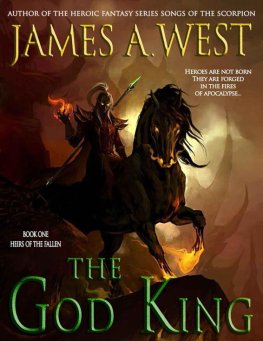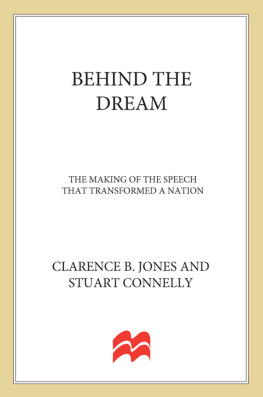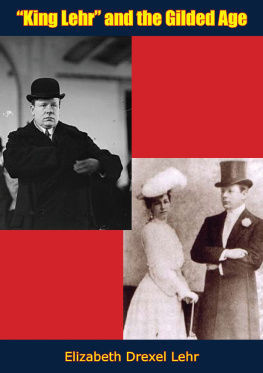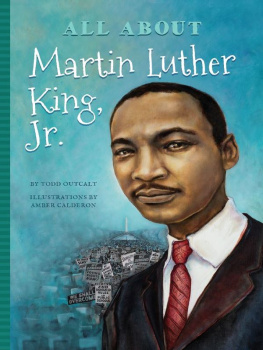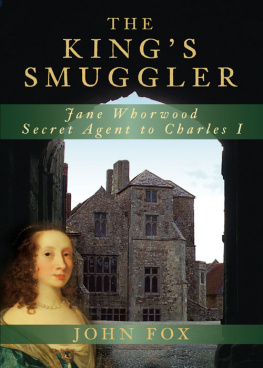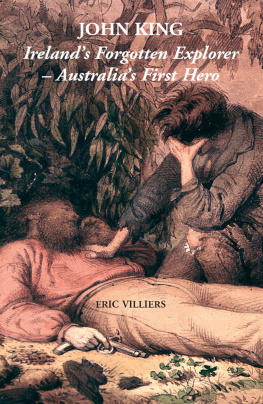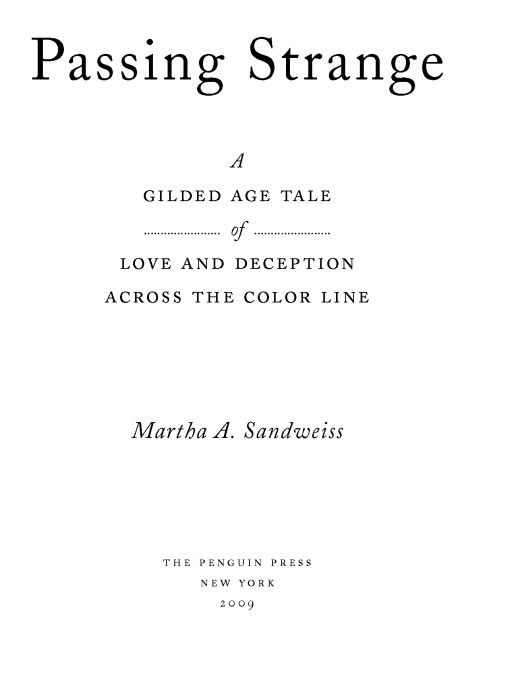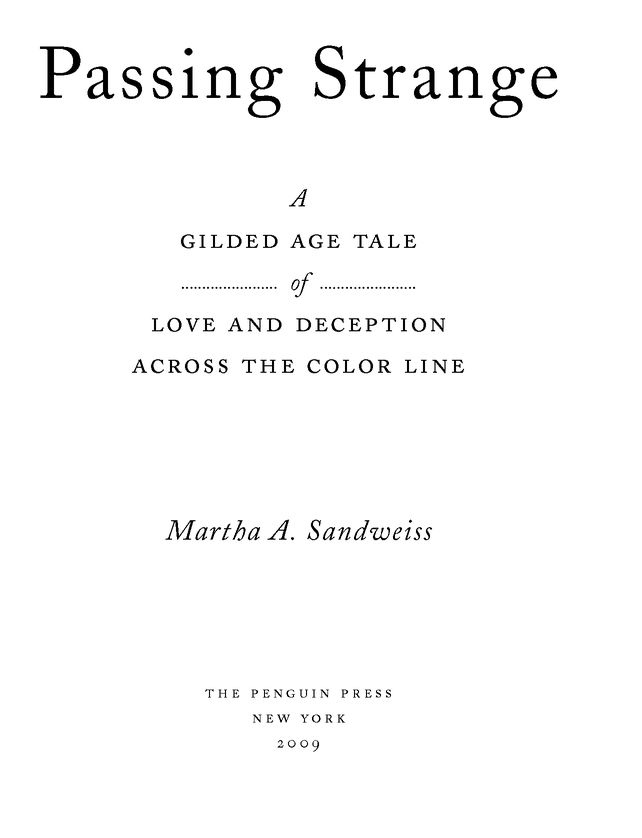Table of Contents
FOR MY PARENTS
Was he merely being another American and, in the great frontier tradition, accepting the democratic invitation to throw your origins overboard if to do so contributes to the pursuit of happiness? Or was it more than that? Or was it less?
Philip Roth, The Human Stain
PROLOGUE
An Invented Life
EDWARD V. BROWN, THE CENSUS TAKER, MOVED SLOWLY DOWN North Prince Street, knocking on each and every door in this Flushing neighborhood of Queens, New York. It was June 5, 1900, a mild and sunny day in the first spring of a new century. And as federal census agents had done once a decade for more than a hundred years, he was counting Americans, compiling a mosaic portrait of the nation. Who lives here, he asked at each residence, and what is the occupants color of skin, their sex, their marital status, their age? For each of the inhabitants he recorded a birthplace, as well as the birthplaces of their parents, and for the foreign-born he noted when they had emigrated and whether they were citizens of the United States. He wrote down everyones occupation, asked whether he or she could read and write, and separated the renters and boarders from the home owners. In his careful, neat hand, Brown dutifully recorded the data on the preprinted census sheets that would eventually find their way to Washington, D.C., and become part of the official twelfth census of the United States. Queens, that census would show, was much like the more densely settled community of Brooklyn, just to the west: it was overwhelmingly white, about 98 percent, with close to a quarter of those white residents foreign born.
As Brown made his way down North Prince Street, he encountered immigrants from Germany, England, Ireland, and Poland, families supported by men who worked as policemen, machinists, and clerks. At number 50, he met Mary Chase, a sixty-year-old widow from Rhode Island who ran a small boardinghouse, and took note of her black housekeeper, the widowed Deborah Peterson. He had counted seventy-two white residents on the street thus far, and Peterson, who descended from an African American family long resident in New York, was the first black person he had encountered. But then he walked next door and knocked at the large and comfortable home at 48 North Prince Street. Two black servants lived here. Phoebe Martin was a thirty-three-year-old widow, and Clarine Eldridge, just fourteen, was scarcely older than the children she had been hired to watch. It was afternoon, and Grace, age nine; Ada, age eight; and Sidney, age six, were home from school, perhaps playing with their three-year-old brother, Wallace. Whoever answered the door probably invited the census taker into the parlor; neither the servants nor the children could have answered his long list of personal questions about the family. And so Edward Brown entered the home to talk to Ada Todd, the lady of the house. Her husband, James, was away, she said, so she would answer the census agents long list of questions herself.
Brown hardly needed to ask her race. With a glance at her dark complexion and wavy black hair, he noted her color of skin as black. Mrs. Todd reported that her parents came from Georgia, and she told Brown that she could read and write. She said that she had been born in Georgia in December 1862. If Brown remembered his history, he might have wondered if Ada Todd had been born a slave. That question was not on his list, though, and he would not have asked.
Mrs. Todd then told Brown about her husband, James. She said that she had married him eighteen years earlier, in 1882. He was a black man, some twenty years her senior. Born in the West Indies, he had come to the United States in 1870, she said. Now a naturalized citizen, he had a job as a traveling steelworker. Perhaps Brown noted that the house seemed proof that Mr. Todd had done pretty well for himself, even if his work often kept him away from his home and his children. Mrs. Todd explained that there had been five: the four still at home and a fifth who had died as a toddler.
Edward Brown took pride in the accuracy of his records, in the neat way in which he filled in the 1,350 blank boxes on each of his census sheets, recording into being a portrait of the polyglot neighborhood springing up in the sparsely settled borough of Queens. And so, he would have been stunned to learn that almost nothing Mrs. Todd told him was true.
To begin with, she had knocked two years off her age, a gesture of vanity, perhaps. And she and her husband had been married for twelve years, not eighteen, a fact of which Mrs. Todd was surely aware, and a lie that seems hard to fathom, since the childrens ages raised no questions about their legitimacy. But the other untruths were more stunning. Her husband was not black. He was not from the West Indies. He was not a steelworker. Even his name, James Todd, was a lie. Ada Todd was in fact married to Clarence King, an acclaimed public figure and the person Secretary of State John Hay once called the best and brightest man of his generation.
King was a larger-than-life character: an explorer of the American West, a geologist, an accomplished writer and storyteller. He hobnobbed with presidents and congressmen and counted some of the nations most distinguished writers and artists among his closest friends. His physical agility and bravery, combined with his keen intellect and wit, commanded near reverence from those who knew him best. With King, the historian Henry Adams wrote, men worshiped not so much their friend, as the ideal American they all wanted to be. But of all this, of her husbands true identity and even his real name, Ada had not a clue.
Not until he lay dying of tuberculosis in Phoenix in late 1901, his last desperate hope of a desert cure gone, did James Todd write a letter to his wife telling her who he really was.
KING SUSTAINED HIS DOUBLE life for thirteen years. He lived as the celebrated Clarence Kinga man who traced his English ancestry back to signers of the Magna Cartain his workplaces, in the homes of his friends, in his Manhattan clubs. But he was James Todd, the black workingman, when he went home to his wife and children in Brooklyn and later in Queens. His well-to-do friends in New York and his family back in Newport, Rhode Island, thought him a bachelor; they never knew about Ada. And she knew nothing of them. Secrecy bounded his separate worlds. An attentive watchfulness governed his every move. No wonder King found married life fraught and complicated.
Ada, however, found nothing particularly clandestine about her domestic life. She might sometimes find it hard to understand why she never met her husbands family or friends, or difficult to explain to neighbors why he was so often away. But her life as Ada Todd gave her a foothold in a middle-class world she could scarcely have dreamed of as a girl in Civil War and Reconstruction Georgia. She embraced the world her marriage gave her and took pleasure in being Mrs. Todd. When she became a widow, she claimed the name of Ada King and did everything she could to assure that the peculiar circumstances of her married life would not remain a secret or become a source of shame to her children.
James and Ada Todd thus understood their life together in different ways. We know the story they told the world. Adas report to the census taker conveys the public tale, or at least one of them. But precisely what they said to each other or, indeed, to themselves lies beyond all knowing. Clarence King took care to make sure that scant record of his secret life would survive. No pictures of the two of them together exist. No piece of paper bears both his signature (either one) and hers. The wedding ring he gave to her had no inscription inside the gold band.


